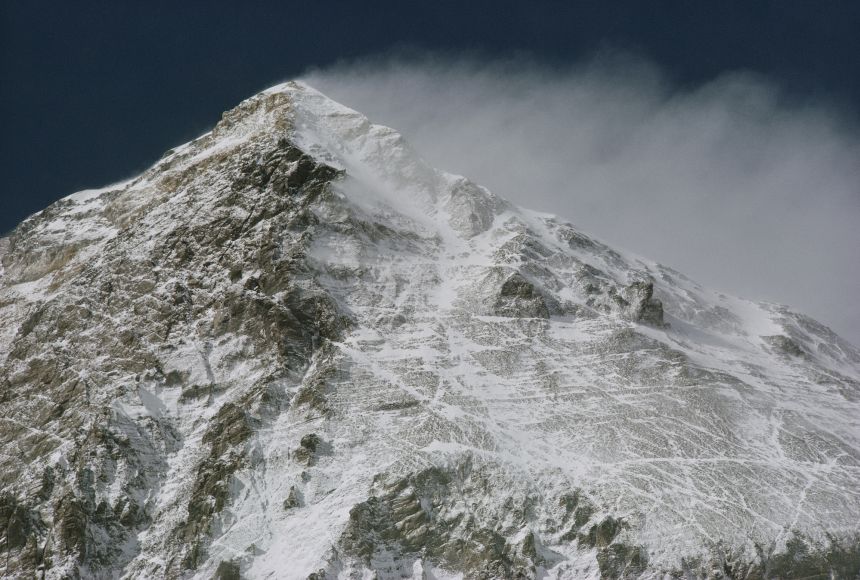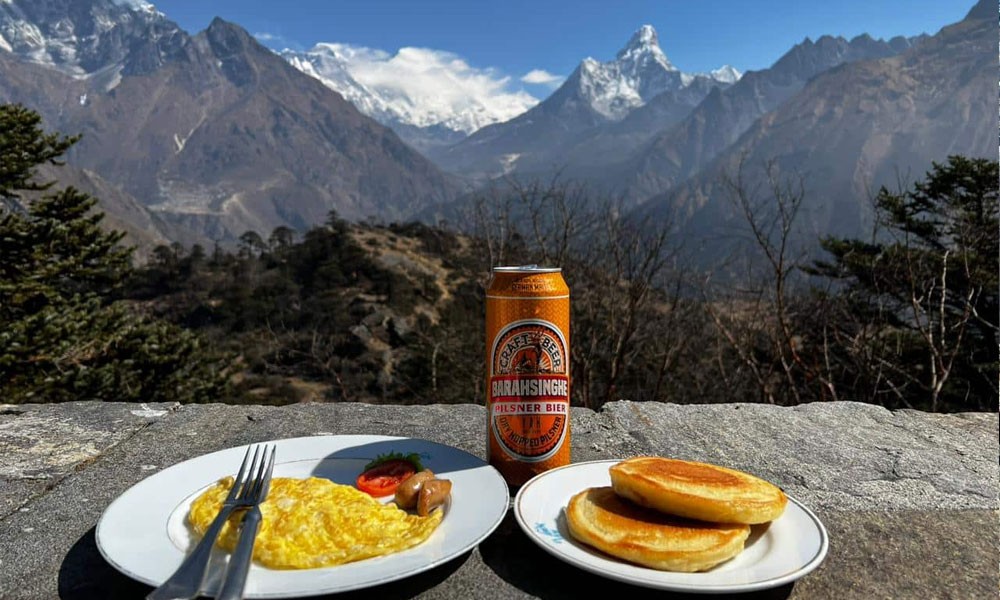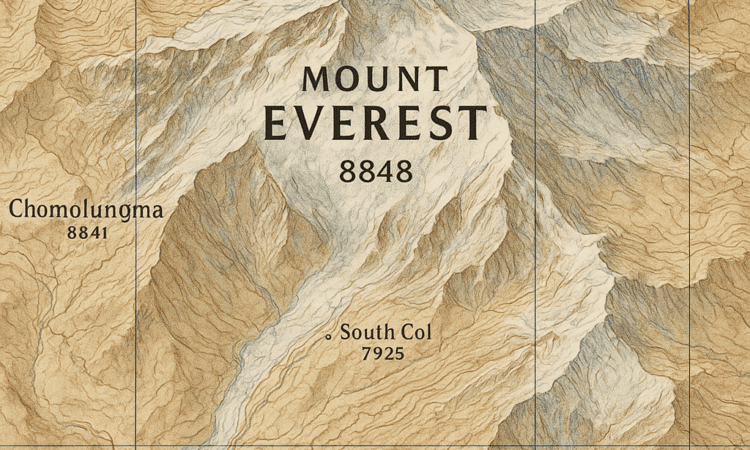
The World’s Highest Peak
Mount Everest is said to be the highest peak of the mountains. To cross it, one has to face many difficulties and also needs a lot of hard work. It is a peak that people from all over the country come to cross. To cross it, one needs to have full desire and full faith and one must also be physically and mentally prepared.Located in the Himalayas on the border of Nepal and Tibet Automobiles region of China the majestic stand at an elevation of 8,848.86 meters
29,031.7feet) above sea level.
1. Name and local name of Mount Everest
International name: (Mount Everest)
Nepali name: (Sagarmatha – forehead of the sky)
Tibetan name: Chomolungma – (Mother Goddess of the World)
In 1865, it was named by the British Government. This name was given by the British Government.
2. The Geography condition of Mount Everest
The weather of Mount Everest becomes very dangerous. It falls below 60-60 degrees in winters. It is very snowy in winters and in summers too, winds blow which make it very difficult to climb and after reaching the top, they carry very little oxygen. Only one-third of the oxygen remains.This route is very difficult to climb, there are many kinds of animals and bushes and flowing snow sometimes causes us to slip.
3. First successful climb of Mount Everest
Despite trying many times, he failed because this climb is very difficult, one should keep trying. Then one day on 29th in 1995, Sir Edmund Hillary from New Zealand and Tenzing Norgay, a Sherpa from Nepal, successfully reached the summit. There are many good achievements for them in their life. In the history of Everest, some people have come into the world and achieved this record.
4. Challenge during climbing Everest
The ascent of Mount Everest is a very difficult climb. It is a difficult climb in which one has to face many difficulties. It is an 8000 meter climb and there are many hurdles in front of it. There are icy winds, falling from the rocks and many other difficulties.
5. There are two main routes to cross it.
1.South Col Route (from Nepal)
2.North East Ridge Route (from Tibet)
Both these routes are very difficult, to cross them a lot of preparation and many things are required like an oxygen cylinder is a must
6. Sherpas: The Unsung Heroes
There are sharps who clean Mount Everest, whom we ignore. Just some time back, they collected 11 tons of garbage and it is a matter of great shame for us that we are making such a heritage dirty. When we go there for a visit, we have the right to clean it. Right now, there are 40 to 50 tons of garbage lying there, which they will clean right now.We should think a little that they clean even in this cold weather, if we do not spread dirt there then they will not need to clean, it will be very good for usThe concern in the mountains is that people are coming and going and there is a lot of problems like oxygen cylinders, etc. and the roads get jammed. The glaciers are flowing fast, the government is now paying a lot of attention to this.
7. Cultural and Spiritual Importance
For the people of Nepal and Tibet, Everest is not just a mountain but a heritage which they consider as a god. They take its blessings before doing anything. For them, it is like a god.When people come to visit the garden, they become financially better and capable. They tell people the way, how to climb and what to do, what things they need and they make it a source of
income.
8. Record of Mount Everest.
- Most Ascents by an Individual:
- Kami Rita Sherpa of Nepal holds the record for the most ascents of Everest — 30 times (as of May 2024).
- Kami Rita Sherpa of Nepal holds the record for the most ascents of Everest — 30 times (as of May 2024).
- First Successful Ascent:
- Sir Edmund Hillary (New Zealand) and Tenzing Norgay (Nepal) on May 29, 1953.
- Sir Edmund Hillary (New Zealand) and Tenzing Norgay (Nepal) on May 29, 1953.
- Youngest Person to Summit:
- Jordan Romero (USA) summited at age 13 in 2010.
- Jordan Romero (USA) summited at age 13 in 2010.
- Oldest Person to Summit:
- Yuichiro Miura (Japan), aged 80, in 2013.
- Yuichiro Miura (Japan), aged 80, in 2013.
- Fastest Ascent (South Side):
- Pemba Dorje Sherpa in 8 hours and 10 minutes (2004). (This record has been disputed but still widely cited.)
- Pemba Dorje Sherpa in 8 hours and 10 minutes (2004). (This record has been disputed but still widely cited.)
9. Diverse Achievements
- First Blind Person to Summit:
- Erik Weihenmayer (USA), in 2001.
- Erik Weihenmayer (USA), in 2001.
- First Woman to Summit:
- Junko Tabei (Japan), in 1975.
- Junko Tabei (Japan), in 1975.
- First Woman to Summit Twice:
- Santosh Yadav (India), in 1992 and 1993.
- Santosh Yadav (India), in 1992 and 1993.
- Most Ascents by a Woman:
- Lhakpa Sherpa (Nepal) with 10 ascents (as of 2022).
- Lhakpa Sherpa (Nepal) with 10 ascents (as of 2022).
10. Unique Feats
- First Skydive Onto Everest Region:
- 2008, skydivers landed at Syangboche Airport near Everest Base Camp.
- 2008, skydivers landed at Syangboche Airport near Everest Base Camp.
- First Helicopter Landing on Summit:
- Didier Delsalle (France), May 14, 2005 – landed a Eurocopter AS350 B3 on the summit.
- Didier Delsalle (France), May 14, 2005 – landed a Eurocopter AS350 B3 on the summit.
- Fastest Ascent by a Woman:
- Lhakpa Gelu Sherpa guided Tamae Watanabe (Japan) to set the female age record (73 years old) in 2012.
RELATED RESOURCES

FOOD
Types of Food Eaten on Mount Everest
1. Base Camp Meals
At Everest Base Camp, food is more varied because it is supplied by yaks, porters, and helicopters. Climbers usually eat:
-
Rice, lentils, and vegetables (Dal Bhat – a Nepali staple)
-
Pasta, noodles, and bread
-
Eggs, potatoes, and soups
-
Tea, coffee, and hot chocolate
Importance of Food for Survival
Without proper food and hydration, climbers can suffer from weakness, frostbite, or altitude sickness.

MAP
Map of Mount Everest
Location of Mount Everest
-
Country: Nepal and Tibet (China)
-
Region: Himalayas
-
Coordinates: 27.9881° N, 86.9250° E
-
Protected Area: Sagarmatha National Park (Nepal)Key Points Usually Marked on the Everest Map
-
Everest Base Camp (Nepal & Tibet)
-
Camp I, II, III, IV
-
Khumbu Icefall
-
Lhotse Face
Pollution on Mount Everest
1. Plastic and Solid Waste
Climbers carry food packets, water bottles, oxygen cylinders, tents, and other supplies. Many of these items, especially plastic packaging, are often left behind.
Effects of Pollution on Everest
- Environmental Damage: Waste takes decades to decompose in freezing temperatures
-
Efforts to Reduce Pollution
-
Government Initiatives: Nepal and Tibet authorities now require climbers to bring back a minimum amount of waste, including used oxygen bottles.
